LEGO - A History Of These Building Blocks Of Imagination
By Royce Armstrong
Lego bricks. Creativity. Childhood. They go together like Mickey Mouse and Disney, wizards and Harry Potter. Lego has been a part of childhood for more than three generations. Nearly everyone under 50 has played with these building blocks of imagination. There is no telling how many engineers and scientists were spawned by these plastic building blocks.
Lego is synonymous with plastic toy bricks that can be easily transformed into buildings, space ships, cars, boats, trains and a myriad of other toys. The key is that the child gets to assemble the toy from the basic building blocks. Each toy can be assembled, disassembled and reassembled in enough new shapes and forms to tickle the imagination and stretch the youngster’s creativity.
Today, Lego is much more that the simple blocks invented in 1949. It is toys, theme parks, movies, and CDs. Lego building blocks and other products are distributed around the world. These tiny plastic bricks and the company they have built, are a phenomenon with a success as remarkable as Mickey Mouse.
Lego Bricks Become The Building Blocks Of Fantasy
Where did Lego come from and how did it get to be such an important tool for childhood creativity?
Our story begins in Billund, Denmark. It is 1932. Master carpenter and joiner Ole Kirk Kristiansen opened a new business. His little company makes stepladders, ironing boards and wooden toys. He has just six employees. Nobody could have imagined, but Lego and the little building blocks of imagination had just been born.
Two years later, Kristiansen adopted the name Lego as a brand name for his toys. The name is derived from the Danish words "leg godt," which mean "play well." Ironically, he later discovered that Lego in Latin means "I put together.” Lego has truly come to mean "put together" and "play well" in virtually every language. At this time, all of the company’s toys were being made from wood.
In 1942, the Lego factory burned to the ground. Kristiansen rebuilt.
In 1947, the Lego Company became the first company in Denmark to buy an injection-molding machine. It began making plastic toy dolls and other toys. The famous bricks were yet to be invented.
It was not until 1949 that the Lego company introduced the Automatic Binding Brick, a little plastic brick, some with four studs and some with eight. At this time, the company was producing about 200 different plastic toys. The Automatic Binding Brick was sold exclusively in Denmark.
By 1950, plastic toys became half of the company’s business. Ole Kirk’s son, Godtfred Kirk, who had worked in the company since age 12, was appointed junior vice president at age 30.
In 1954, Godtfred Kirk made a trip to England to meet with a purchasing agent. The purchasing agent told Kristiansen that he thought the Automatic Binding Bricks lacked an idea and system. Godtfred returned to Denmark. The Lego System was developed.
The following year, Godtfred introduced the Lego System at a toy fair in Germany. It was the first time it was introduced outside of Denmark. The results were disappointing. Kristiansen did not give up. Later that year, the Lego System Play was developed. It was an improved system for the Lego bricks. The Lego System Play was exported to Sweden, where it sold well.
In 1959, Lego bricks and the Lego System were introduced in Great Britain, France, and Belgium.
It wasn’t until 1961 that Lego bricks were first marketed in the U.S. and Canada. They were an immediate hit and distribution around the world continued. By the end of that decade, 843 people in Billund worked for the Lego company. The first Legoland film was produced. In 1969, the DUPLO system for children under age five was introduced.
By 1970, there were almost 1,000 employees at the plant in Billund.
In 1980, the Educational Products Department was established. The DUPLO Rabbit logo was introduced and a survey showed that 70 percent of all Western European families with children under age 14 had Lego in their home.
As 1990 unfolded, the Lego Group had become one of the world’s 10 largest toy manufacturers and the only toy company of that size in Europe. The others were in Japan and the U.S. More than one million people visited the LEGOLAND theme park and Godtfred Kirk Kristiansen celebrated his 70th birthday. Lego Publishing was renamed Lego Licensing and the LEGOLAND Band issued an LP.
With the beginning of the new century, LEGO continues to grow. It has also continued to remain a family owned company. These days, Kjeld Kirk Kristiansen, the grandson of Ole Kirk, runs the company.
In 2003, a record 1.63 million people visited the LEGOLAND theme park in Billund. The Lego mini-figure celebrated its 25th birthday and the BIONICLE film “Mask of Light” was released to great success. Representations of the Lego mini-figures Biff Starling and Sandy Moondust are the first earthlings to reach the planet Mars onboard the NASA Mars rovers "Spirit" and "Opportunity." The Lego Education Center in Shanghai opened. The concept was aimed at children from age three to age twelve. There are more than 80 Lego Education Centers in Korea alone. www.lego.com receives around four million visitors per month.
Lego bricks are more than just building blocks. They are learning toys. They build on favorite themes and children’s stories and allow the child to exercise his or her own imagination and creativity. Offshoots of the basic brick include such toys as Lego Robotics, Star Wars Lego, Harry Potter Legos and many other building toys and kids' games. It is truly amazing what a few bricks and a full measure of imagination will produce.







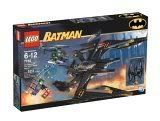

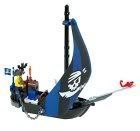

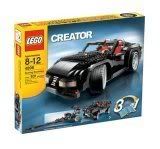
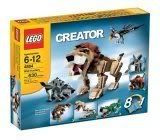
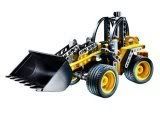

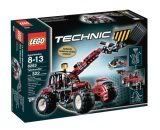
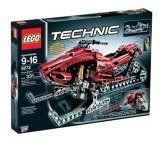






0 comments:
Post a Comment